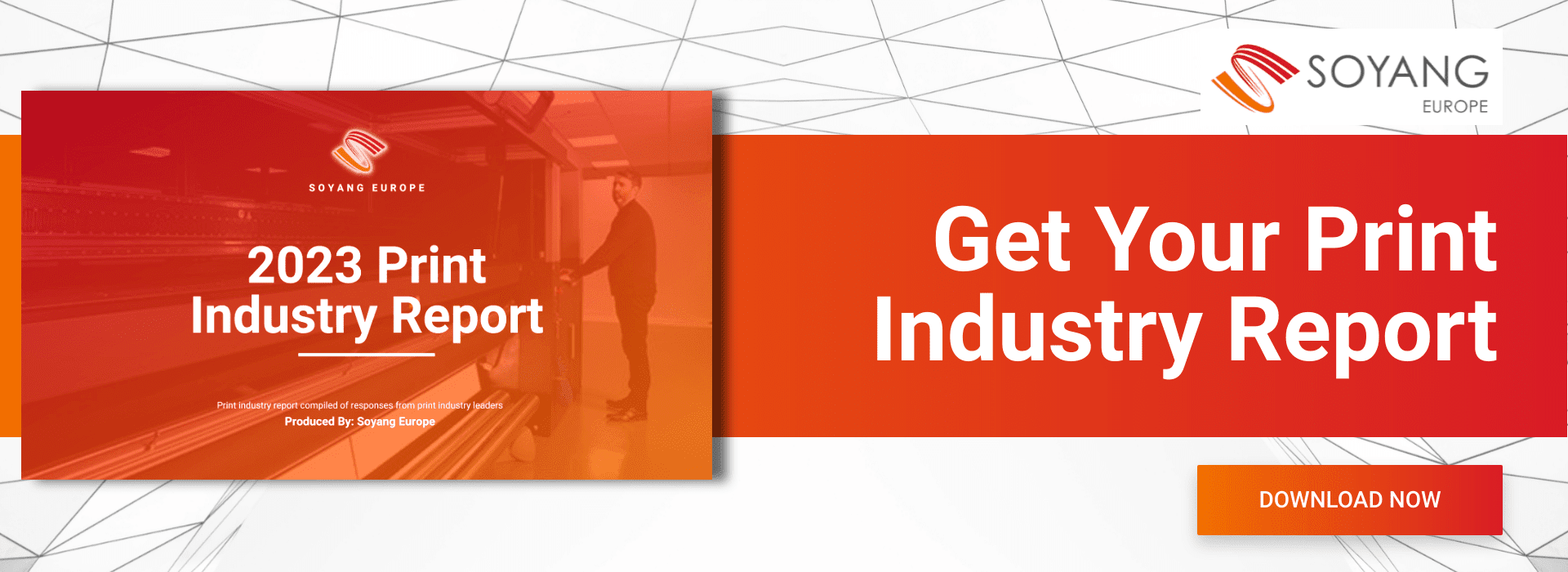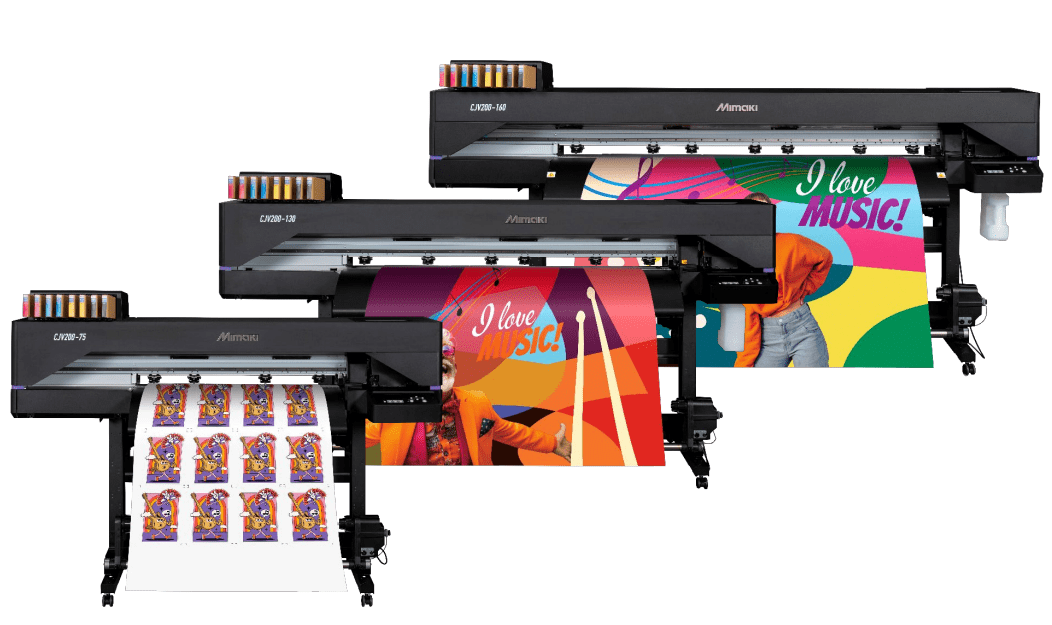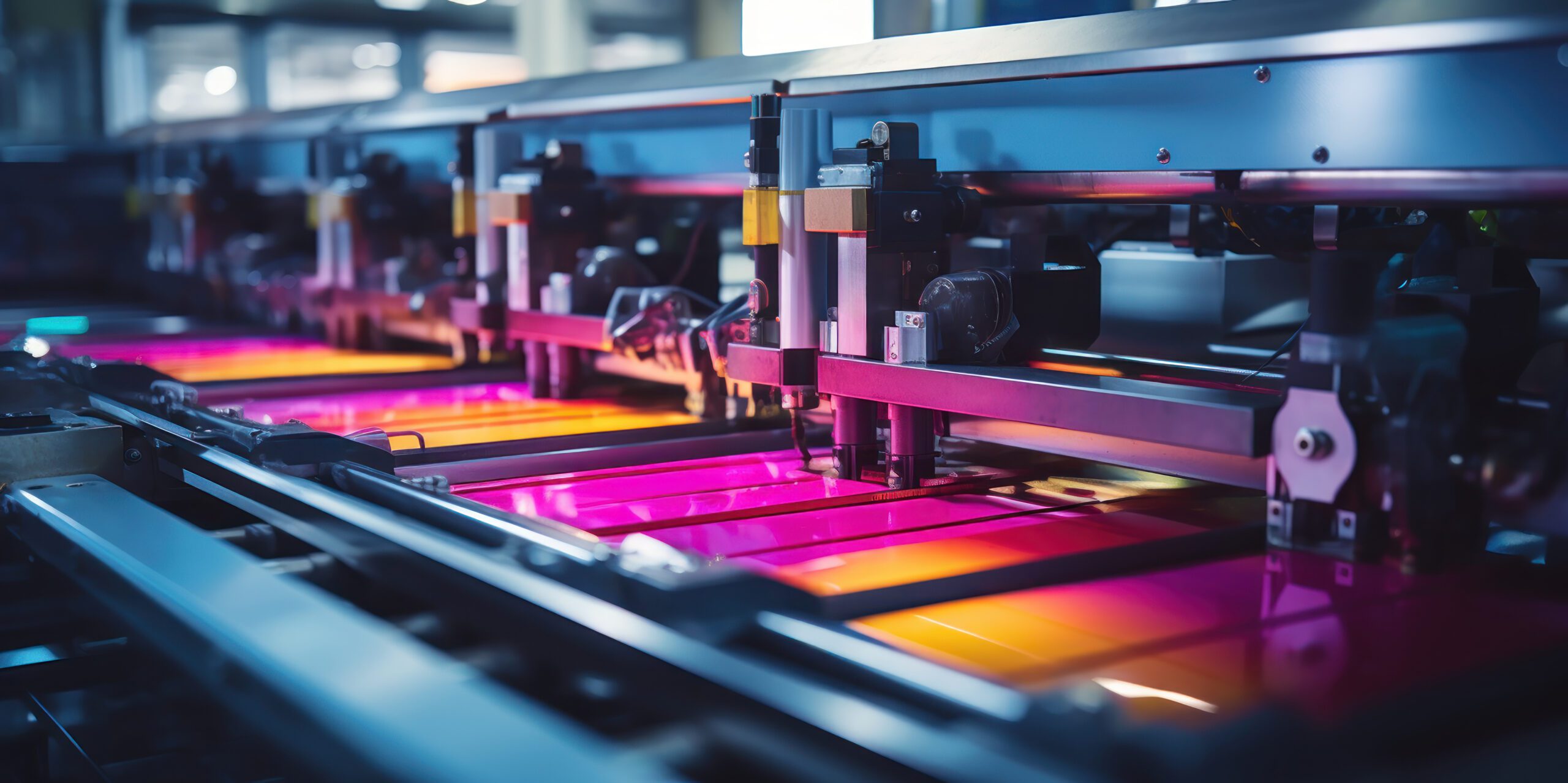Large format and wide format printing have used solvent printing for the last 25 years. If you are looking to produce large, high quality commercial or graphic images on banners, flooring and windows there are a number of media, printers and inks to consider. This guide will help to identify when and where to use large format solvent printing along with the benefits and considerations of using this innovative print technology.
What is Solvent Printing?
Solvent printing can be used to print onto surfaces like vinyl, metal, PVC, fabric or any other surface. The term solvent means the ink doesn’t contain water. Instead it is made from petroleum-based products like acetone, so prints are 100% waterproof when dry.
The solvent works by softening the surface of the material allowing the ink to chemically etch to it, making them significantly more durable and protected from weathering than water-based inks. This process creates a strong bond. Once printing has cured (only 30-40 degrees of heat is required) secondary processes like lamination can then be applied.
What is Large Format Printing?
Large format printing, or wide format printing, is the printing of graphics onto very large paper rolls or other materials like PVC up to 5m wide, much larger than standard printer capability.
Wide format printing technology has developed rapidly and printers can now print directly onto substrates that just wasn’t possible a few years ago. Some of the uses of large format solvent printing media include:
- PVC Banners
- Window Film (Static Clings)
- Printable Wallpaper
- Printable Flooring
- Magnetic Sheets
- Printable Fabric and Textiles
- Self Adhesive Vinyl
- Soft Signage
- Mesh Banners
Digital technology and automation means large printing capabilities are more accessible than ever before. Printing runs can operate remotely using cloud technology and produce 24 hours a day.
When and Where to Use Large Format Solvent Printing
Solvent printing can be used for almost any media using large format printing technology. It is suitable for self-adhesive stickers, exhibition banners, vinyl, pop up, roller banner polyesters and PVCs.
Solvent printing technology can be used for roll-to-roll (like wallpaper) and flexible materials (like PVC, floor coverings and textiles). It works particularly well for static clings as it does not interrupt the static charge. It also works well for first and secondary print processes to deliver sharp, vivid colours.
When it comes to flexible media solvent printing is a great choice. While UV printing can be used when printing vinyl, they aren’t always recommended for printing on more flexible or stretched materials as colours can band together which will affect both the quality and the overall design.
Advantages and Benefits of Using Large Format Solvent Printing
Large and wide format printing can be used to produce large, detailed graphics, either for branding, advertising or marketing displays. These can be seen on hoardings, windows, vehicle wraps, flooring or almost any other surface where printed media is seen.
Outdoor advertising
Where large graphics are needed to be seen from a distance, solvent inks can produce vivid detail and the large format printing technology creates dramatic, one-piece media where piecing together multiple, smaller prints is not practical.
Retail graphics
Retail outlets are increasingly using window space to feature products utilising window wraps as well as more flexible banner displays in-store. Large format printing can create bespoke sizes for any banner and window size required.
Textile prints
Flexible displays that require specific textiles requiring fine knit or weave counts like stretch-frames, tents, backlit displays and flags can be manufactured using large scale solvent printing.
Floor printing
For museums looking to recreate evocative journeys through time with authentic-looking printed cobbles or poppy-filled fields to sports stores seeking to create realistic pitch prints on their retail flooring, polyvinyl print technology allows almost any design to be featured in a one-piece flooring design.
Solvent Printing Vs Other Print Technology
When choosing large format printing, the three most common inks used are solvent, latex and UV based. Depending on the application required can impact the decision-making for which print technology is best.
Solvent Inks
Solvent inks are often the choice for large format print graphics. The inks are the most waterproof and scratch-resistant of all three technologies and can be applied to a wide range of surfaces. However, as it contains volatile organic compounds (VOCs) it can take longer to dry than other finishes, meaning longer lead times and potential delays to high-volume printing.
Latex Inks
Latex ink’s primary benefit is that it stretches better than either UV or solvent printing. Latex is often widely used in retail signage and vehicle graphic art modification. It is water-based meaning it can be affected by external heat processes and very high curing temperatures are required. It can use 60% less ink and fewer VOCs than solvent inks.
UV Inks
UV-cured inks use exposure to UV radiation to dry quickly unlike the heat required in other print technologies and this process turns the ink into a film. They are often not recommended for printing on flexible materials, but are often the choice for small-scale high volume print shops. Inks tend to be cheaper but do not have the durability or flexibility of the large format printing technologies such as solvent or latex.
What is Eco-Solvent Printing?
Eco-solvent inks have been around for a while now and are becoming better with each new generation of ink products. They contain none of the VOCs used in non eco-solvents instead using a mild biodegradable solvent like glycol esters or ethers to suspend the ink, making them more environmentally friendly.
The reduction in odour is a real bonus for using eco-solvent inks. Some solvent inks produce a strong smell in the printing process, and can also leave a smell on the printed media. This can be a consideration for indoor display applications. However with each new version of solvent inks, less VOCs and chemicals are being used as technology continues to advance.
Benefits
- The lack of a noticeable smell when using eco-solvent can be a real bonus when screen printing, especially for indoor signage.
- Utilising fewer VOCs means cartridges are not as damaging to either the environment or the printer itself ultimately reducing the environmental footprint.
Considerations
- Eco solvents require considerably more heat to dry and have slower drying times because of a lack of acetone used.
- Eco solvents are more expensive. For mass-production, solvent inks can be more cost-effective.
As technology advances the environmental benefits of using eco-solvents make this greener printing technology more desirable. It produces less waste and eco-solvents contain fewer harmful chemicals.








